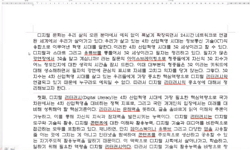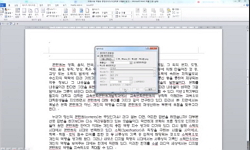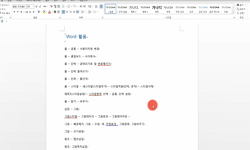본 연구는 1)국어 연구에 사용되어 온 음운론적 단어의 쓰임과 개념을 검토하고, 2) 국어 음운론적 단어의 적절한 정의를 찾기 위해 진행되었다. 1) 음운론적 단어는 음운 규칙이나 제약의 적...
http://chineseinput.net/에서 pinyin(병음)방식으로 중국어를 변환할 수 있습니다.
변환된 중국어를 복사하여 사용하시면 됩니다.
- 中文 을 입력하시려면 zhongwen을 입력하시고 space를누르시면됩니다.
- 北京 을 입력하시려면 beijing을 입력하시고 space를 누르시면 됩니다.
https://www.riss.kr/link?id=A106632101
- 저자
- 발행기관
- 학술지명
- 권호사항
-
발행연도
2020
-
작성언어
-
- 주제어
-
등재정보
KCI등재
-
자료형태
학술저널
-
수록면
57-84(28쪽)
- DOI식별코드
- 제공처
- 소장기관
-
0
상세조회 -
0
다운로드
부가정보
국문 초록 (Abstract)
본 연구는 1)국어 연구에 사용되어 온 음운론적 단어의 쓰임과 개념을 검토하고, 2) 국어 음운론적 단어의 적절한 정의를 찾기 위해 진행되었다. 1) 음운론적 단어는 음운 규칙이나 제약의 적용 범위, 형태 · 통사적 단어의 성격에 관한 판단 근거, 굴절어를 기준으로 한 단어 개념을 비판적으로 수용하기 위한 장치, 단어음운론을 넘어 발화음운론으로 나아가기 위한 기본 단위의 네 역할을 수행해 왔다. 그런데 정작 음운론적 단어의 외연은 합의를 이루지 못한 채 논의에 따라 띄어쓰기 단위, 의존적인 구성 요소는 앞선 요소의 일부로 보는 띄어쓰기 단위, 실현된 휴지를 경계로 하는 단위의 상이한 모습으로 등장함이 확인되었다. 이에 본고는 음운론적 단어와 밀접하게 관련된 개념인 휴지와 어절의 개념을 검토하여 음운론적 단어의 정의를 ‘음운론적 어휘소를 하위 단위로 하며, 양 옆에 휴지가 실현된 단위’로 다듬었다. 이는 기존 음운론적 단어의 여러 외연 중 하나인 실현된 휴지를 경계로 하는 단위를 지지한 결과였다. 남은 두 외연은 결국 형태론적 단위로서 각기 단순어절, 복합어절 등 기존의 형태론적 용어로 투명하게 부르는 것이 더욱 합리적인 용어 사용이라고 보았다.
다국어 초록 (Multilingual Abstract)
In this present study, a) we review how phonological word (‘p-word’) has been defined and used in Korean Linguistics, b) based on which we examine the clear-cut notion of p-word in Korean. We first show that p-word has four major roles in Korean l...
In this present study, a) we review how phonological word (‘p-word’) has been defined and used in Korean Linguistics, b) based on which we examine the clear-cut notion of p-word in Korean. We first show that p-word has four major roles in Korean linguistics: a domain to apply phonological rules or constraints, a criterium to judge the boundary of morphological or syntactic words, a bridge to understanding the concept of word that was first developed based on inflecting languages, and a scaffold to the utterance-level phonology. We then suggest that p-word has been used to refer to three different units, some of which are morphological, not phonological, which led to a vicious circle. More specifically, p-word referred to one of the following three units across studies: a) a lexical item and its following postpositions or case markers, b) a lexical item and all following bound forms, c) a phonological unit marked by a physical pause. Based on the above review, we claim that 1) the notion of p-word should be restricted to phonological units and b-2) both connotation and denotation of p-word should be merely phonological. Sequentially, in order to re-define p-word, we examine the notion of pause and eojeol, the key concepts that have been adopted to define p-word in the literature. Finally, we defined p-word in Korean as ‘a unit marked by a physical pause, consisting of (a) phonological lexeme(s)’ in support of the third connotation of p-word: a phonological unit marked by a physical pause. Finally, two remaining connotations were assigned to simple eojeol and compound eojeol, respectively, in consideration of their morphological character.
동일학술지(권/호) 다른 논문
-
- 한국어문교육연구회
- 오미영(吳美寧) ( Oh Mi-young )
- 2020
- KCI등재
-
- 한국어문교육연구회
- 오민석(吳玟錫) ( Oh Min-seok )
- 2020
- KCI등재
-
「남염부주지(南炎浮洲志)」의 두 세계, 신념(信念)과 의혹(疑惑)
- 한국어문교육연구회
- 이승수(李勝洙) ( Lee Seung-soo )
- 2020
- KCI등재
-
1960년대 동인지(同人誌) <현대시>에 나타난 분열증적 육체(schizo-body)의 환상(幻想) 연구
- 한국어문교육연구회
- 서진영(徐眞暎) ( Seo Jin-young )
- 2020
- KCI등재






 KCI
KCI KISS
KISS







